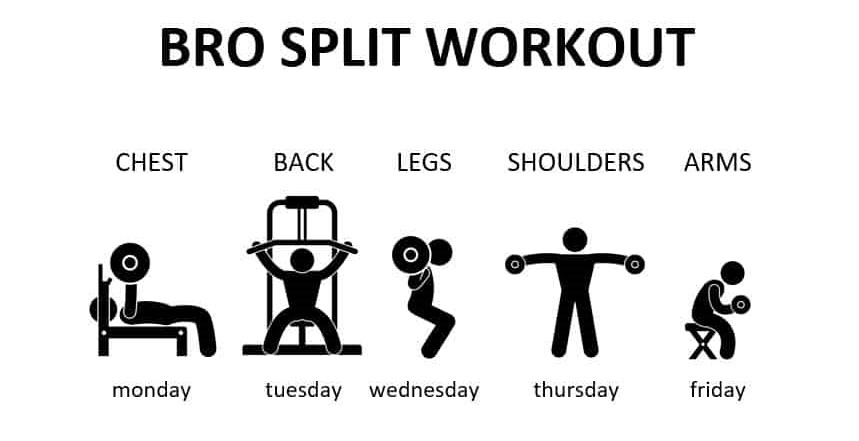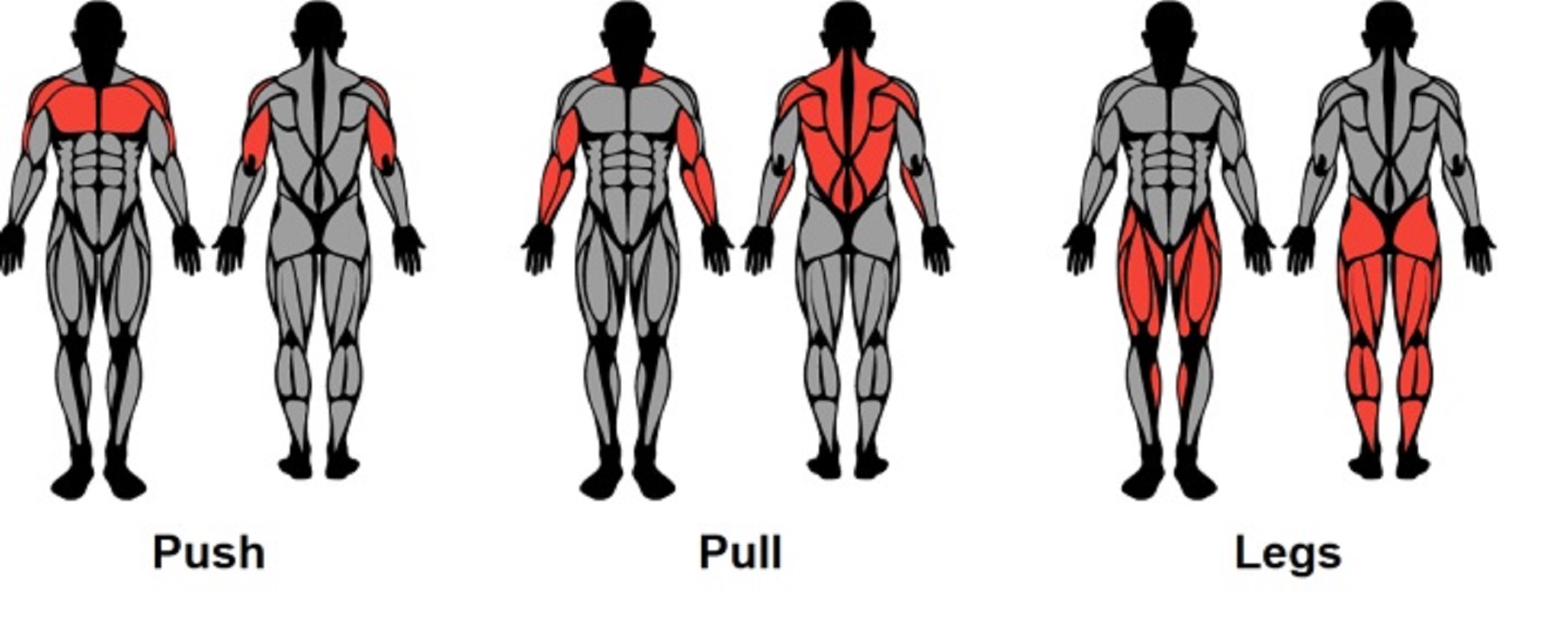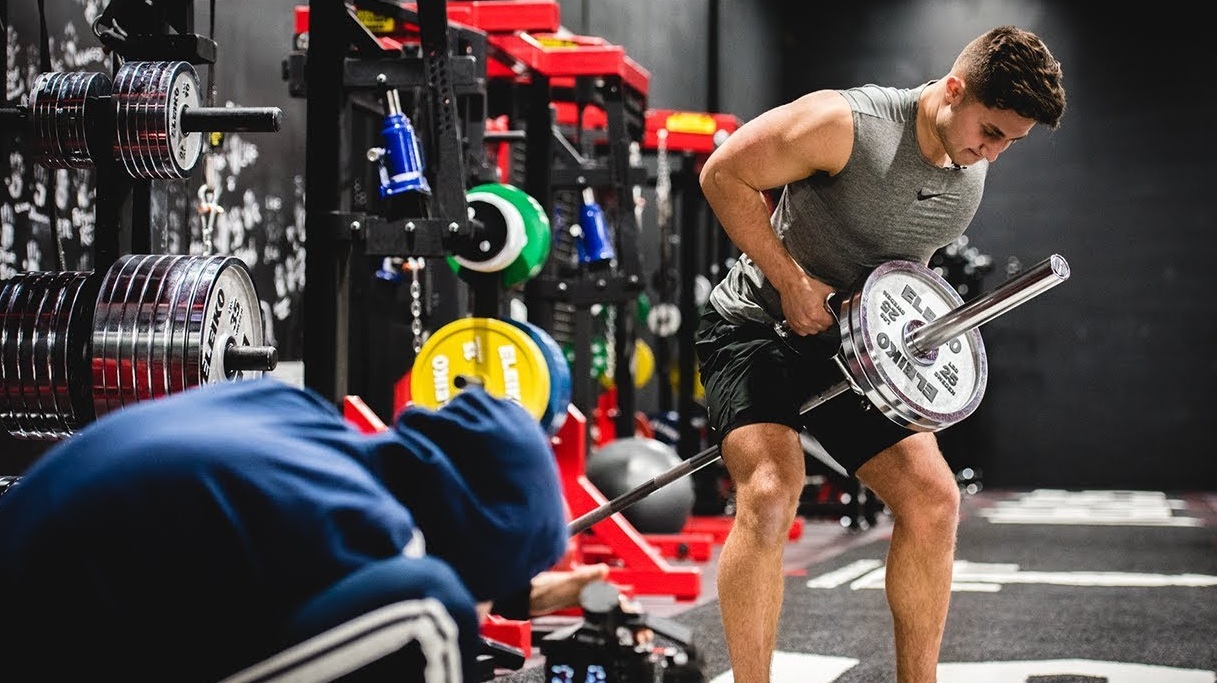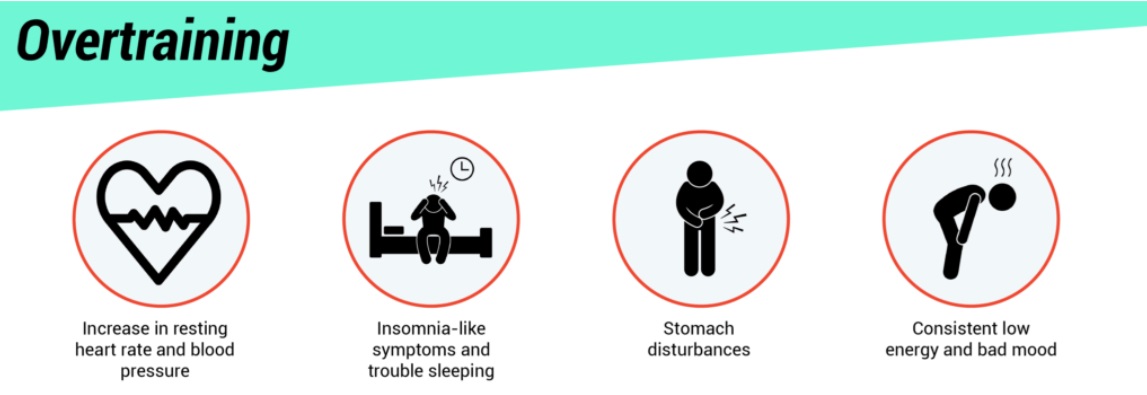- When creating your workout routine, you’ll encounter numerous training splits to choose from, each capable of delivering results.
- However, before getting on your fitness journey, it’s essential to grasp the potential setbacks and errors that might impede your progress.
- Selecting the right training split is crucial. Your choice of training split often hinges on personal preferences and what motivates you in the gym.
- However, consistency is the key. It’s in maintaining consistency that many individuals stumble, underscoring the importance of aligning your chosen split with your level of commitment.
Today, we’re going to explore three popular training splits, each with its own set of benefits and downsides.
I. The Bro Split
- The Bro Split, often referred to as the “Bodybuilder Split,” is a classic and time-tested approach to resistance training.
- While it has gained notoriety and might seem old school, it has its merits and can be effective for those who understand its nuances. The core principle of the Bro Split is its simplicity: one muscle group, one day. For example, you might designate Mondays as “Chest Day,” Tuesdays as “Back Day,” Wednesdays as “Leg Day,” and so on. This approach offers some undeniable benefits.

- The workouts are typically designed with a blend of compound and isolation exercises targeting the specific muscle in focus. For example, “Chest Day” may involve bench presses, dumbbell flyes, and cable crossovers, each hammering the chest from various angles.
Pitfalls: The Weekly Frequency Challenge and the Laziness Trap
- While the Bro Split can foster deep muscle engagement, it does come with a notable drawback – frequency. Training each muscle group only once a week means there’s a prolonged wait between workouts. If your goal is to stimulate muscle growth regularly and maintain a high level of metabolic activity, the Bro Split might not be your best choice.
- Another potential pitfall of the Bro Split is the temptation to become complacent. Since you have an entire day dedicated to one muscle group, you must be careful not to fill it with subpar exercises or become too relaxed.

- It’s crucial to select exercises that truly challenge the muscles and avoid shortcuts that might undermine your progress. The Bro Split, while effective, comes with both unique advantages and potential pitfalls.
- For instance, if it’s leg day, hopping on the stair climber for a few minutes isn’t enough, and neither is spending time flexing in front of the mirror. Trying to replace an intense chest workout with a few sets of flexing exercises won’t yield the results you desire.
- To make the most of the Bro Split, you must ensure that every exercise and every minute of your dedicated day is meaningful. This means pushing your muscles to their limits. Remember, it’s the intensity and the quality of your workout that truly matters in the end. So, to avoid looking the same forever, make each training session count!
II. The PPL Split in Practice
Suppose you opt for a six-day training week. You could structure your PPL Split with one rest day.
- The PPL Split is well-suited for a broad range of fitness enthusiasts, from beginners to advanced lifters. It’s an excellent choice for those looking to balance muscle development across various body parts, boost strength, and maintain a higher training frequency. This increased frequency can enhance muscle growth and help develop a well-rounded physique.
- The PPL (Push, Pull, Legs) split offers a highly flexible approach to training, making it suitable for individuals with hectic schedules or other obligations. This split comes with several benefits and creative opportunities.

Versatile Scheduling Options for the Busy Bees
The PPL split excels in its adaptability. It caters to those who have demanding jobs, family responsibilities, or time constraints that might prevent them from spending hours in the gym every day. There are two primary scheduling options to choose from:
- Six Days On, One Day Off: With this approach, you work out for six consecutive days and then take a single rest day. This pattern allows you to target muscle groups frequently while still granting your body time to recover.
- Three Days On, One Day Off (Continuously): This setup is a personal favorite for many fitness enthusiasts. You cycle through three workout days, followed by a rest day, and then repeat. While you technically don’t hit each muscle group twice a week, the continuous cycle ensures that your body gets consistent training.
Creative Training Strategies:
- For the PPL split to yield optimal results, thoughtful planning is key. Unlike those who haphazardly select exercises based on machine availability, successful PPL users design their training program with precision.
- The beauty of the PPL split emerges when you begin to emphasize specific aspects of your training. For example, on leg day, you can focus on quad and glute exercises in one cycle, and then, four days later, shift your emphasis to hamstrings and calves. This strategic variation keeps your workouts engaging and targets different aspects of your lower body muscles.
- Incorporating this creative approach extends to other muscle groups as well. On a back day, you can start one cycle by emphasizing lat exercises and then, in the subsequent cycle, dive into heavy movements like deadlifts and T-bar rows.

- You can further refine your training by targeting specific muscle heads. For bicep training, you can dedicate one session to exercises that primarily engage the long head and then switch to exercises that hit the short head in the next cycle. The same can be done for the triceps, first focusing on the lateral head and then targeting the long head in the following cycle.
- This meticulous approach to the PPL split offers a level of control and creativity that makes your workouts more interesting, engaging, and fruitful. It’s an effective way to avoid the stagnation that often plagues workout routines and ensures that you continue to progress. Whether you’re a busy professional or just someone looking for a flexible yet effective training strategy, the PPL split can be the perfect solution.
III. High-Frequency Training
High-frequency training (HFT) focuses on frequent, sometimes daily, workouts that target specific muscle groups or goals. It’s different from traditional routines with longer recovery periods. HFT aims to give your muscles regular, specific stimuli for faster adaptation and growth, helping achieve fitness goals like building muscle, increasing strength, or enhancing endurance.
The Importance of Adaptation
The human body is remarkably adaptable. When you expose it to a new stressor, like resistance training, it adapts to handle that stress more effectively. With high-frequency training, you challenge your muscles more regularly, which can lead to quicker adaptations. This approach can be beneficial for various fitness objectives:
- Muscle Development: For those aiming to build muscle, HFT can provide a consistent stimulus that encourages muscle growth. Regular workouts ensure that your muscles are frequently engaged and recovering, which can lead to hypertrophy.
- Strength Gains: Frequent training sessions allow you to practice movements and lift more often. This can lead to strength gains as you become more proficient in those exercises. For example, powerlifters might use HFT for specific lifts like squats or deadlifts.

- Endurance and Skill Improvement: Athletes often use high-frequency training to improve their sport-specific skills and endurance. By regularly practicing movements and drills, they enhance their performance in competition.
Structured Versus Frequent Training
- It’s essential to distinguish between structured training and mere frequent exercise. High-frequency training should follow a structured plan. This plan outlines which muscle groups you’ll target on specific days and the type of training you’ll perform.
- For example, a bodybuilder might use a PPL (Push, Pull, Legs) split with high frequency, ensuring they work different muscle groups on different days.
Cautions and Considerations
High-frequency training is not without its challenges and potential pitfalls:
- Recovery: Proper recovery is vital in high-frequency training. You need to pay extra attention to sleep, nutrition, and techniques like active recovery (e.g., foam rolling) to support muscle repair and growth.
- Overtraining: Overtraining can occur if you push your body too hard without adequate recovery. It’s essential to monitor your body’s signals for fatigue and adjust your training accordingly.

- Exercise Selection: High-frequency training doesn’t mean you should do the same intense workout daily. Vary your exercises, rep ranges, and intensity to prevent plateaus and reduce the risk of overuse injuries.
- Individual Variation: The effectiveness of high-frequency training can vary from person to person. Factors like age, experience, and genetics play a role. It’s essential to find the right balance that works for you.
High-frequency training is a unique strategy that defies conventional workout wisdom. It’s often used as a remedy for addressing muscle imbalances or simply as a means to shake up your routine and expedite progress. While the concept might seem counterintuitive and challenging, it can deliver outstanding results.
Defying Logic for Symmetry
- The high-frequency training approach often comes into play when one side of your body appears significantly more developed than the other.
- Perhaps you’ve recovered from an injury, and one side has surged ahead while the other lags behind. The inclination to train the underdeveloped side more frequently might seem odd, but it’s a way to rectify this imbalance.
- When you dedicate yourself to training one side every single day, you’re essentially taking a bold step against conventional wisdom.
- It might not seem logical, and to some extent, it challenges reason. However, this approach has a knack for delivering effective results.
- It’s like pouring all your energy into nurturing a withering plant until it flourishes alongside its healthier counterpart.
A Matter of Discipline
This unconventional style of training not only addresses muscle imbalances but also serves as a testament to your dedication and discipline. It’s an act of defying the odds, of committing to a vision of equilibrium. Much like high-frequency training itself, the act of showing up daily, even when it seems unconventional or inefficient, builds character and resilience.
Full-Body Frequency and Avoiding Complacency
- In the realm of high-frequency training, there’s another approach: training your entire body every day. While this might sound like a dream for some fitness enthusiasts, it does come with its own set of challenges. Training full-body five days a week might seem like the ultimate commitment, but it’s also a path that could lead to complacency.
- The danger here lies in assuming that your workouts should be easy because of their high frequency. This is a misconception that can hinder your progress. Although soreness doesn’t necessarily equate to muscle growth, a sense of challenge is essential to ensure you’re continually making progress.
- In essence, high-frequency training, whether it’s focused on a specific side or entails full-body workouts, offers a unique journey.
- It tests your dedication, defies convention, and demands that you don’t compromise on intensity. It’s a path that can deliver impressive results, especially if you’re looking to correct asymmetries, revitalize your workouts, and ultimately strengthen your character. If high-frequency training works for you and keeps you motivated, then why not give it a shot?









